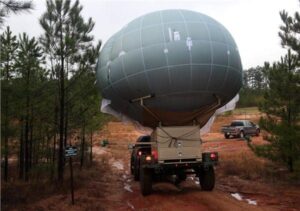 Drone Aviation Holding Corp., a manufacturer of tethered drones and lighter-than-air aerostats, has announced that it has received a follow-on order from the United States Environmental Protection Agency (EPA) for a helium-filled aerostat and related airborne equipment and operator training in Jacksonville, FL.
Drone Aviation Holding Corp., a manufacturer of tethered drones and lighter-than-air aerostats, has announced that it has received a follow-on order from the United States Environmental Protection Agency (EPA) for a helium-filled aerostat and related airborne equipment and operator training in Jacksonville, FL.
The aerostat purchase follows a 2015 EPA contract awarded to DAC for a customized winch system and related equipment as part of the Agency’s National Risk Management Research Laboratory (NRMRL) program for emissions sampling utilizing tethered aerostats.
Jay Nussbaum, Chairman of Drone Aviation Holding Corp., stated, “With this purchase by the EPA, we have further strengthened our relationship with this important government agency and continue to demonstrate the value of our tethered aerostat systems. Furthermore, we are providing operational training ensuring that the new systems are used safely and effectively in the NRMRL’s aerial missions.”
The NRMRL operates DAC’s helium filled aerostats, winches and supporting hardware based on technologies developed for the WASP aerostat system. The WASP is a highly tactical and mobile aerostat system that provides ISR and communications range extension. The U.S. Army owns and operates WASP systems which have been utilized by the U.S. Army as a tactical battlefield solution that can support soldiers on the ground. Operating at ten times the height of the tallest U.S. Army tower system, the WASP system can significantly extend the range of communications in remote and austere locations. The soldier-operated systems can be rapidly configured to support a variety of mission requirements for days, weeks or months with customized payloads, including voice and data communications and day/night video.
The NRMRL has conducted aerial sampling of emissions since 2010 using tethered aerostats carrying gas and particle sampling instruments to an altitude of up to 400 feet to capture emissions from sources as diverse as waste fires, burning oil plumes, and forest fire smoke.


















